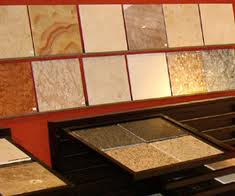Want to learn more about the Turkish Travertine tile? Read on for facts and info on beautifully adorned Turkish travertine tiles made using natural sedimentary rock…
Turkish travertine tiles are unique stone tiles that are made using a sedimentary rock that goes by the name of travertine. Although the largest natural resource of travertine stone is in Tivoli, Italy, the travertine tiles from Turkey have become the most popular of their kind all over the world.
The rocks used for making these tiles actually derive their name from the Latin version of the city’s name where the rock is to be found. Other regions where this stone is found in abundance include Mexico, Southwestern America and Eastern Europe. Today you will be able to find Turkish travertine tiles in home improvement stores and they can even be ordered from the manufacturers directly.
The raw material used for producing these tiles is often referred to as Travertine marble, and in some cases also travertine limestone. Although the sedimentary rock does share some similarities with these other forms of rocks, they cannot be classified as marbles or limestone. The natural setting within which travertine is found is hot springs. It develops because of the deposition process that takes place in these wet caves. The water is saturated with carbon dioxide and it slowly breaks and re-deposits the calcium carbonate content. The rock has a coarse texture and has many holes on its surface that are created because of air bubbles.
All natural Turkish travertine tiles are available in a variety of colors ranging from red to cream, beige, yellow and white. The kinds of minerals that penetrate the stone during its formation process have an effect on the color of the stone and thus the tiles.
Manufacturers of Turkish travertine tiles produce them in a wide variety of finishes. The most commonly produced tiles are the filled tiles that have been filed down and then filled. This process helps to eliminate the holes that are naturally found in the rock and it also gives the tiles a smoother texture and an even surface. Travertine tiles are also available in the unfilled variety. These tiles are made with the holes in tact. They can be given different finishes ranging from glossy to matte and shiny. The manner in which they are processed produces the different kinds of finishes. For example, the honed travertine has the matte look whereas the tumbled and brushed tile tends to have a rougher texture and a natural appearance.
You will also be able to find Turkish travertine tiles in crosscut styling that has now acquired the title of Saturnia. When producing these kinds of tiles the rock is cut against the grain. This is an unorthodox approach to making travertine tiles and the result is a very unique and distinctive appearance.
Individuals interested in incorporating Turkish travertine tiles need to be aware of the fact that they are highly vulnerable to acids. This limits their use to specific locations only where you are sure they will not be harmed with acid. This is why they are not suitable for kitchens.





